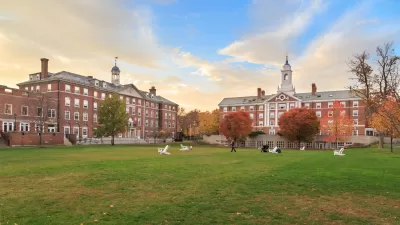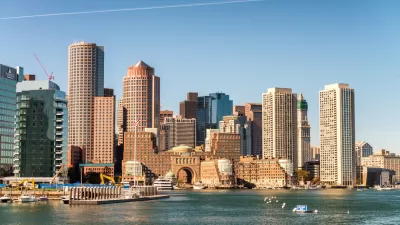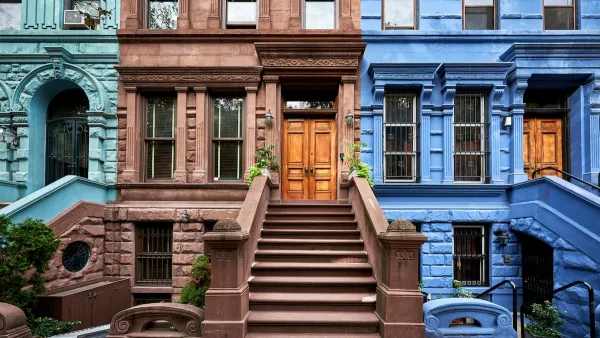Top universities are turning away thousands of eligible applicants, in part due to NIMBY resistance to building new student housing.

An opinion piece from Matthew Yglesias in Governing calls attention to the crisis facing U.S. colleges and universities that mirrors the nation’s larger housing crisis: too much demand, not enough supply.
According to David Deming, co-author of a new report on college admissions, “every year there are 30,000 to 35,000 students with scores of either 1550 (on the SAT) or 34 (on the ACT), but there are only 20,000 slots in these 12 [top] schools.”
For Yglesias, “There is a relatively simple way to reduce the tensions and build on one of America’s great national strengths: Make these schools larger.” And the biggest obstacle to doing so: NIMBYism.
As the article explains, elite universities often have trouble building new student housing near their campuses. “Thus the quintessential local issue of zoning squabbles ends up generating a national scarcity of elite college admissions slots, fueling zero-sum competition and ultimately reducing America’s ability to increase global ‘exports’ of its best-in-class high-end higher education product.”
Yglesias believes “state governments ought to take a larger role in land-use policy and overrule local stakeholders.” Universities and the engines of economic development they represent, Yglesias writes, are “too important to allow the people who happen to live close-by to have veto power over the whole thing.”
FULL STORY: America’s Colleges Are Also Facing a Housing Crisis

Planetizen Federal Action Tracker
A weekly monitor of how Trump’s orders and actions are impacting planners and planning in America.

Congressman Proposes Bill to Rename DC Metro “Trump Train”
The Make Autorail Great Again Act would withhold federal funding to the system until the Washington Metropolitan Area Transit Authority (WMATA), rebrands as the Washington Metropolitan Authority for Greater Access (WMAGA).

The Simple Legislative Tool Transforming Vacant Downtowns
In California, Michigan and Georgia, an easy win is bringing dollars — and delight — back to city centers.

The States Losing Rural Delivery Rooms at an Alarming Pace
In some states, as few as 9% of rural hospitals still deliver babies. As a result, rising pre-term births, no adequate pre-term care and "harrowing" close calls are a growing reality.

The Small South Asian Republic Going all in on EVs
Thanks to one simple policy change less than five years ago, 65% of new cars in this Himalayan country are now electric.

DC Backpedals on Bike Lane Protection, Swaps Barriers for Paint
Citing aesthetic concerns, the city is removing the concrete barriers and flexposts that once separated Arizona Avenue cyclists from motor vehicles.
Urban Design for Planners 1: Software Tools
This six-course series explores essential urban design concepts using open source software and equips planners with the tools they need to participate fully in the urban design process.
Planning for Universal Design
Learn the tools for implementing Universal Design in planning regulations.
Smith Gee Studio
City of Charlotte
City of Camden Redevelopment Agency
City of Astoria
Transportation Research & Education Center (TREC) at Portland State University
US High Speed Rail Association
City of Camden Redevelopment Agency
Municipality of Princeton (NJ)





























